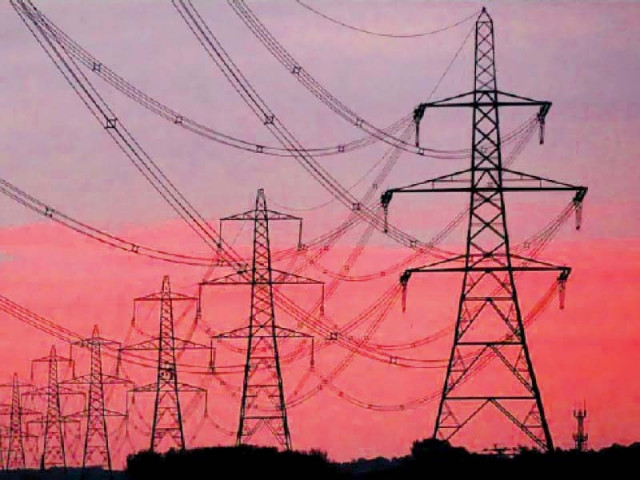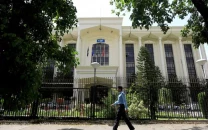Improving power DISCOs’ performance
Distribution companies should employ software, hardware to detect fraud, collusion

Inefficiencies of distribution companies have been considered as one of the main power sector problems, although this is not the sole issue and performance improvement alone may not allow to get rid of the problems and difficulties of the sector.
Losses may at best be halved and brought to the level of 8-10%. Technical improvements such as smart meters alone may not be a panacea but organisational changes would be required as well.
We will discuss some of these issues and strategies in this space.
One of the DISCO performance metrics is T&D losses, which include technical and commercial losses. The latter includes theft and there is no dearth of it in the system.
In Pakistan, aggregate T&D losses have amounted to 17%, a slight improvement over immediate years. Interestingly, the situation in India is more or less the same. There, these losses are 21%, which have come down from 33% in 2003.
There should be no complacency, however, in India the financial condition of DISCOs is almost equally bad, requiring billions of dollars of bailouts by the central government.
There is so-called circular debt too, which as per latest data was INR 1.39 trillion – our corresponding figure is PKR 2.3 trillion, roughly equal taking into account the exchange rate difference.
It should be noted that the Indian economy and population is 8-10 times larger than that of Pakistan with installed generating capacity of 373,436 megawatts, of which 89,636MW is renewable and 45,699MW is hydro.
Reasons are almost identical between the two countries – poverty and low paying capacity of consumers, theft and leakages, corruption and inefficiency.
Average may, however, be a deceptive metric. It can hide good and bad performers. Pakistan’s average of 17% hides worst performers Pesco, Mepco and Hesco with T&D losses of 38.8%, 14.93% and 38.55% respectively and good performer Iesco at 8.54%.
Organisational issues
One thing that appears to be common among high T&D loss entities is their size and geographical areas – Qesco, Pesco, Hesco and Mepco have geographical areas of 334,616 square km, 77,474 square km, 81,087 square km and 105,505 square km.
By comparison, K-Electric’s jurisdiction is 500 square km, which has a peculiar urban domain. Qesco is a supplier to the largest province, which is sparsely populated.
Large areas mean larger distances between control centres and field offices and facilities. Distance breeds remoteness, lack of control and oversight, and field officers’ fiefdoms.
It is said that the farthest point from the head office should not be more than 100 km to enable senior managers to travel to field offices and facilities.
Small and cogent DISCOs have been discussed over the years. Pesco’s division into two or three companies is on the cards. Hesco has been divided already into two parts. There is indeed a strong case for dividing large geographical domains of DISCOs into two or three parts.
It may also be noted that with the implementation of Competitive Trading Bilateral Contract Market (CTBCM), electricity selling business is slated to be taken away from DISCOs and given to independent licensed companies as has been done in most advanced countries.
Thus, one-third of the turnover may be privatised. If geographical division is implemented as well, the DISCOs size would be reduced to 20-30% of the existing parameters.
The size reduction along with wire-only status may enable the DISCOs to improve their efficiency as money and market aspect may be taken away from them and they would be restricted to asset management.
In the reduced size, the risk of managing DISCOs may come down and competition among takers may increase. Lesser companies may delve into buying and running DISCOs.
In the current situation of large assets and turnover, only foreign companies and their joint ventures may venture, which may result in foreign exchange drain.
Privatisation has been opposed by trade unions and they have managed to discourage it, although it is the government which did not have clear plans and strategy in this respect. This may continue to be the case.
Companies can, however, be divided without going into privatisation. In fact, the prospects of privatisation may improve. Only accounting and billing has to be separated along with a few other manageable organisational adjustments.
Smaller companies may require cheaper management and smaller boards as well. T&D losses and other pilferages may be controlled due to closer control and oversight.
This is the step one that could have been taken by any hesitant government. High-loss DISCOs may be initially taken up for this task.
Technical interventions
Interesting developments have taken place for the reduction in T&D loss (theft, leakages, billing frauds, etc).
A Canadian company has developed a smart and mobile sensor, which can be installed (clipped with ease) on transmission or distribution wires and major electrical parameters can be measured. It has an inbuilt wireless communication module, which instantaneously transmits data to an analytical software platform.
Anomalies in the energy flow can be diagnosed with the help of database. The sensor at $100 a piece is not a bad deal.
It is not required to be fixed at one place but is mobile. Hence, a few teams per district can have sets of these sensors to keep monitoring possible anomalies and theft.
Fifty sensor sets per district can enable formation of a viable anti-theft squad. For 100 districts, it would be 5,000 sensors. In $1.5 million, a whole country-wide project can be launched.
However, there is a catch in it. It requires the support of a software platform, which can be costing more than the hardware and the consultant’s fee.
The company offers a performance-based payment. It brings its own software and hardware and takes a share in the savings from loss reduction.
Remarkable progress has been made in the area of data mining and analytics and forensic software. Billing analysis can reveal cases of fraud and collusion in meter reading, bills compilation and payments received. There can be internal or external issues.
It would be advisable that our DISCOs (both electrical and gas) employ these software or employ specialised consulting services in this respect.
Smart meters
We would emphasise the redesign and revival of smart meter programme, which has the potential of reducing theft. The current programme is purposeless and not feasible. If implemented, throughout Pakistan, it would cost more than seven years and almost 10 years.
A redesigned programme focused on distribution transformers would be cost effective and can be fast-tracked to two years. Priority should be given to high-loss DISCOs where the initial ground already exists through the earlier US-aided pilot projects.
The writer is former member energy of the Planning Commission and has authored several books on energy sector
Published in The Express Tribune, January 03, 2022.
Like Business on Facebook, follow @TribuneBiz on Twitter to stay informed and join in the conversation.


















COMMENTS
Comments are moderated and generally will be posted if they are on-topic and not abusive.
For more information, please see our Comments FAQ